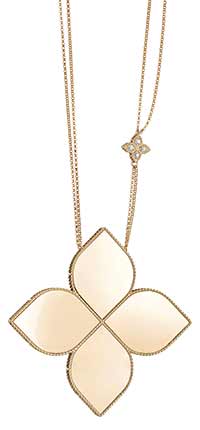|
|
|
Industry
VincenzaOro 2017
By Avi Krawitz
 |
| Roberto Coin |
There was a different feel to the VicenzaOro show this January, the first show under new owners Italian Exhibition Group (IEG). Just three months after the merger between Rimini Fiera and Fiera di Vicenza, management presented a menu of exhibitions they hope will grow the VicenzaOro brand and inspire demand for Italian jewelry design.
With events planned for Dubai, Hong Kong, Las Vegas and Mumbai, the goal is to showcase things “Well Done in Italy,” while adapting to the ever-changing consumer space that is challenging traditional Italian jewelry design, stressed Matteo Marzotto, vice president of IEG. That tension between maintaining the intricacies and craftsmanship of design and changing consumer desires was evident in the five key trends for 2017 observed by Rapaport Magazine.
As consumers’ interests and tastes are changing, so is their perception of jewelry, emphasized Carlo Quadri Mariani, owner of Mariani, a high-end jewelry manufacturer. “The younger consumer is more casual and is looking for wearable, simple jewelry that has value,” he said. “The design is secondary for them and we have to adapt by creating a classical look that has a twist to bring out the personality of the piece.”
Both Roberto Coin, owner, Roberto Coin, and Mariani noted the middle-income consumer is under pressure and jewelry demand has consequently concentrated in two market segments: lower price points and high-end luxury.
Design becomes more important at the high end, said Michael Bloch of CML Jewelry, whose company has invested more in the design element as it tries to capture a greater share of that niche. However, the middle-income consumer has moved to lower price points. Mariani observed that overproduction in Asia has caused a saturation of pavé jewelry in the market. Jewelers are using more large stones with color gemstones, which are gaining in popularity.
Buyers are looking for lighter weight jewelry — 14-karat gold rather than 18-karat gold — that can satisfy consumers’ tighter budgets, exhibitors noted.
While consumers are tightening their purse strings, Paola De Luca, creative director of Trendvision Jewellery+Forecasting, encouraged the industry to diversify its marketing to tap potential spenders among the four consumer types that are trending today but have seemingly been forgotten. “We talk a lot about Millennials today, but really it’s Generation X, in their late thirties and forties, who are established and have money to spend,” she stressed. She advises that designers and retailers focus on this “affluent Midult” consumer.
De Luca also recognized a “gender neutral” fashion trend among the post-Millennial generation, while Millennials have adopted an “anti-hedonist,” spiritual outlook that lends to more simplicity and subtlety in the jewelry they wear.
Finally, the “single globalist” suggests that buying trends are no longer defined by borders, or seasons for that matter. “People no longer want to be told when and where they can wear an item,” De Luca added. Those consumers want bold jewelry with vintage references of bygone religions and cultures.
The January show centered on responsible gold, highlighting the importance of corporate social responsibility that encompasses traceability, ethical trade, environmental protection, ensuring workers’ rights and an ethical working environment. While consumers are driving this movement, the responsibility falls to the trade.
“You have to know your supplier and you also have to know who you are selling,” said Wilfried Hoerner, chairman of the Responsible Jewellery Council (RJC). “That is essential to ensure an ethical supply chain.”Article from the Rapaport Magazine - February 2017. To subscribe click here.
|
|

|
|